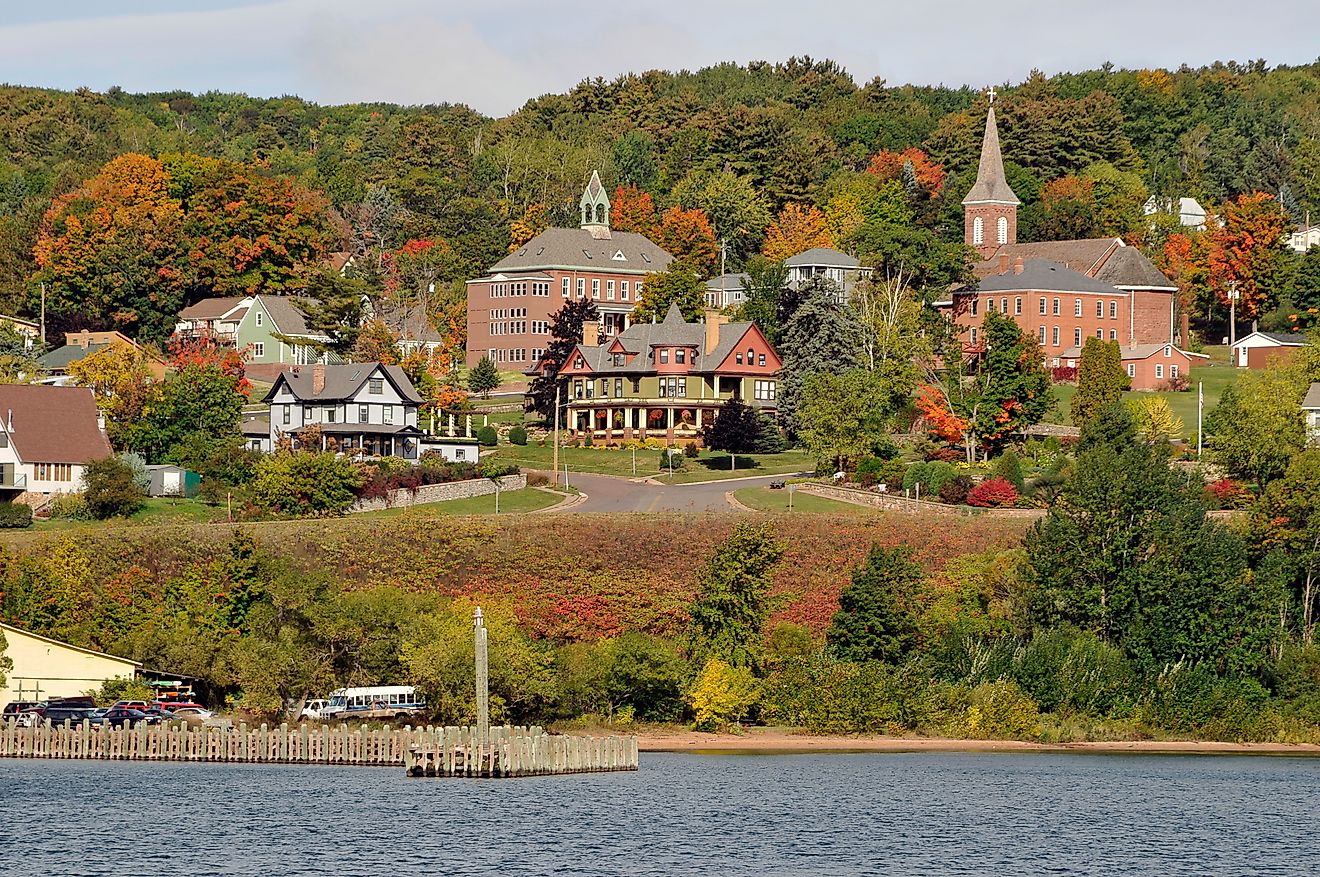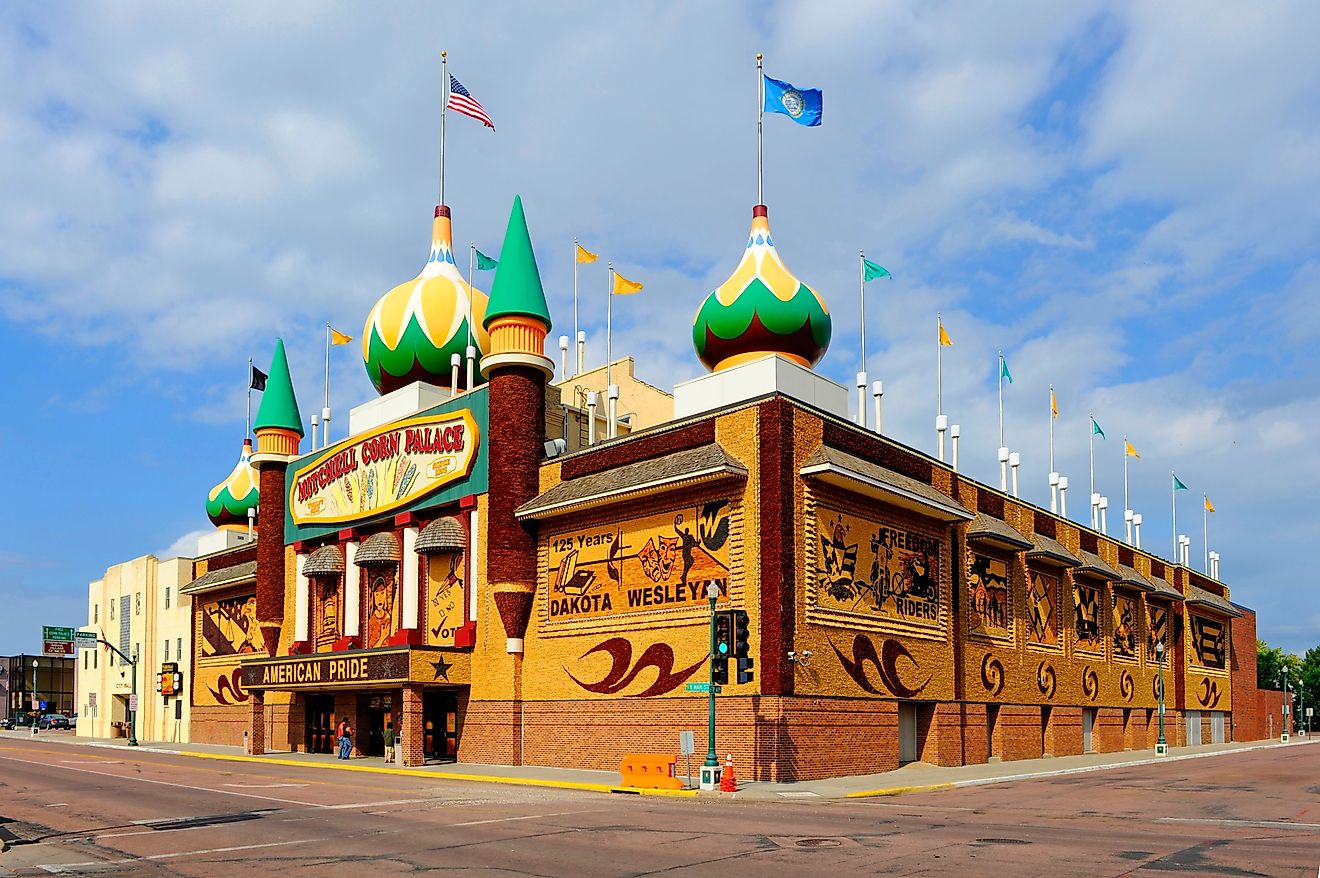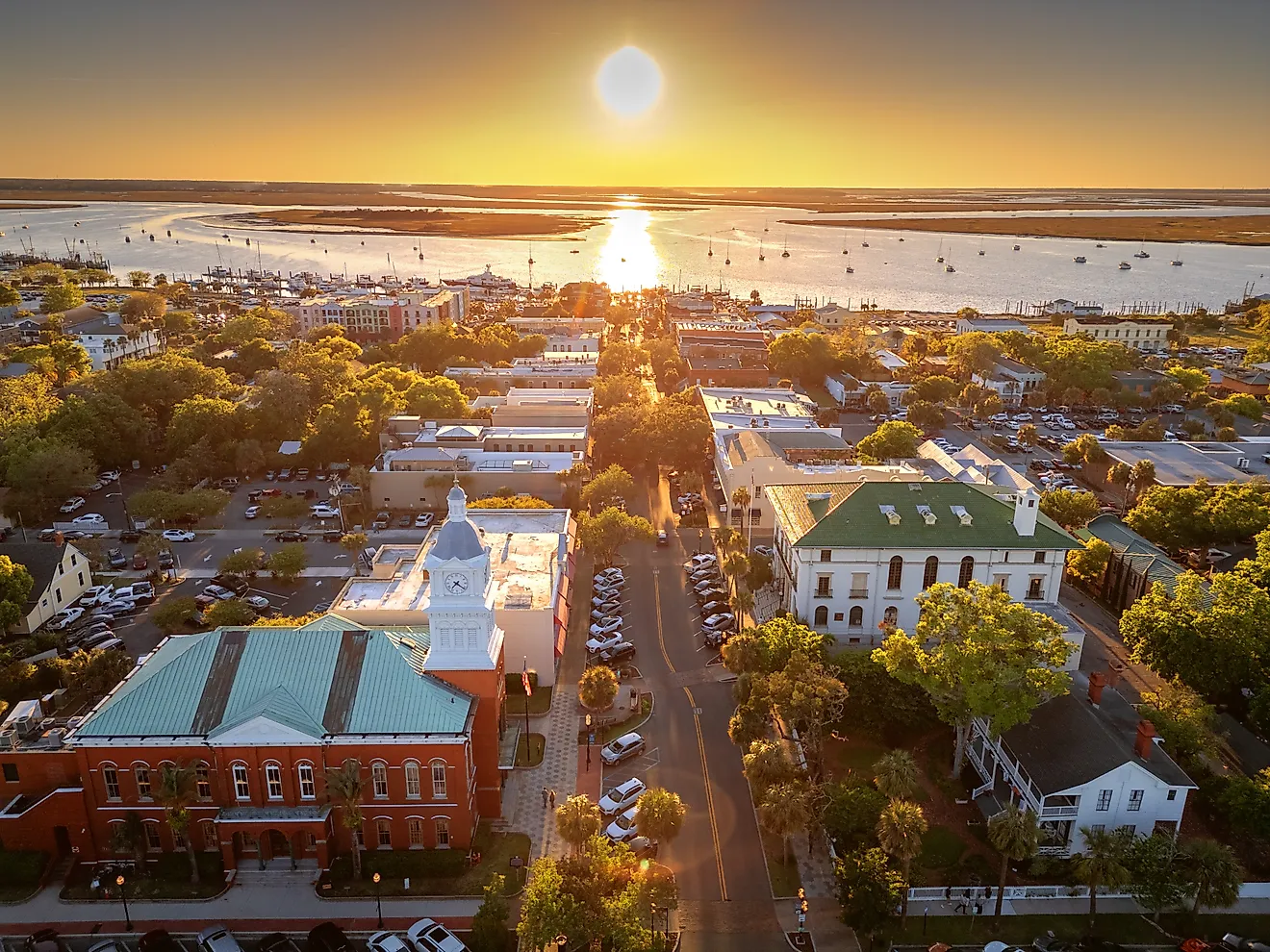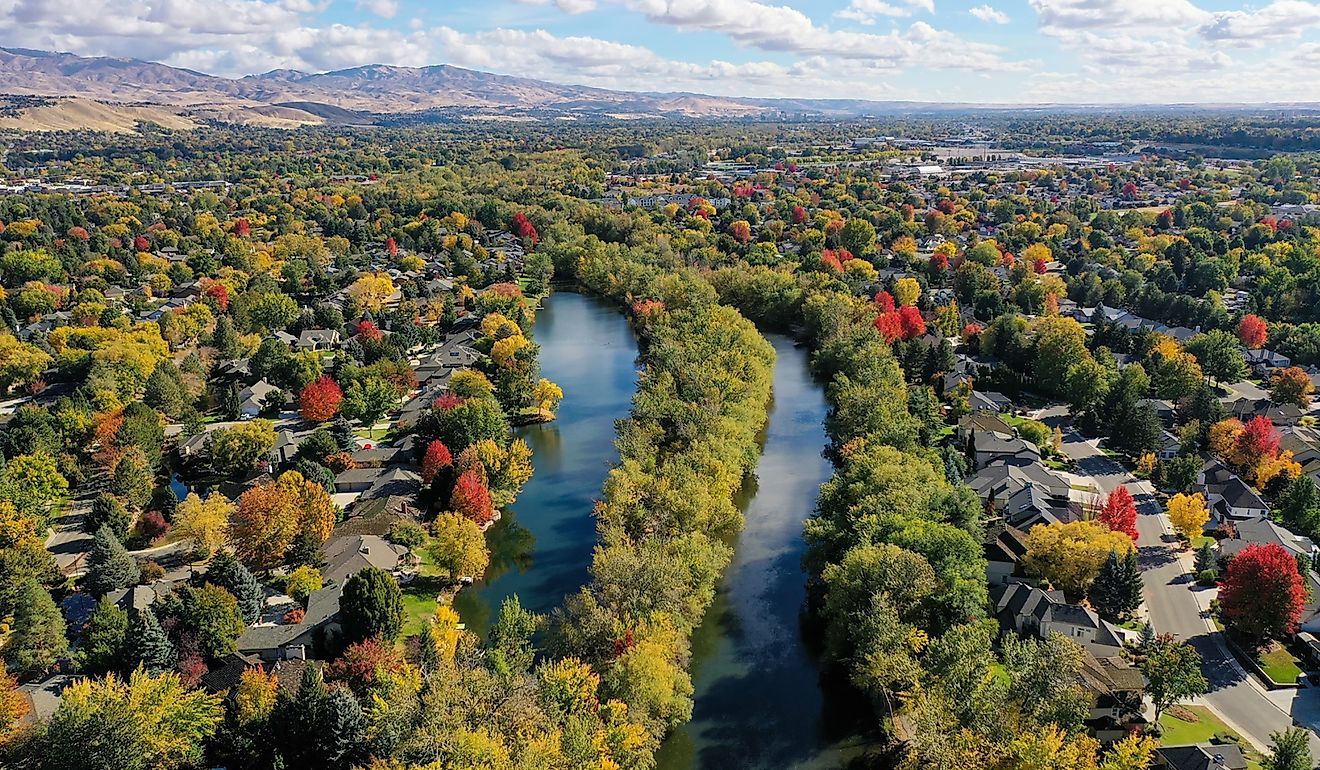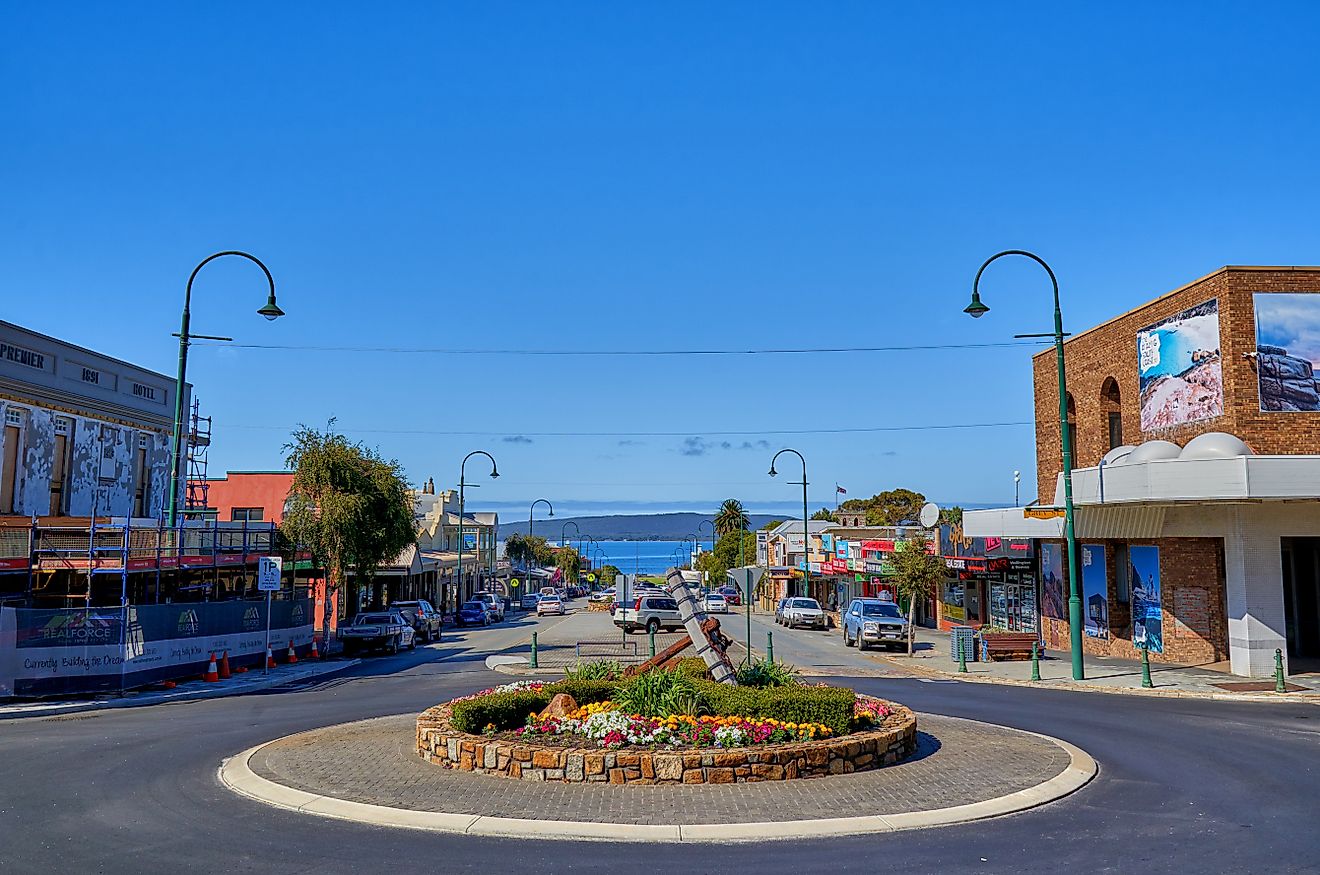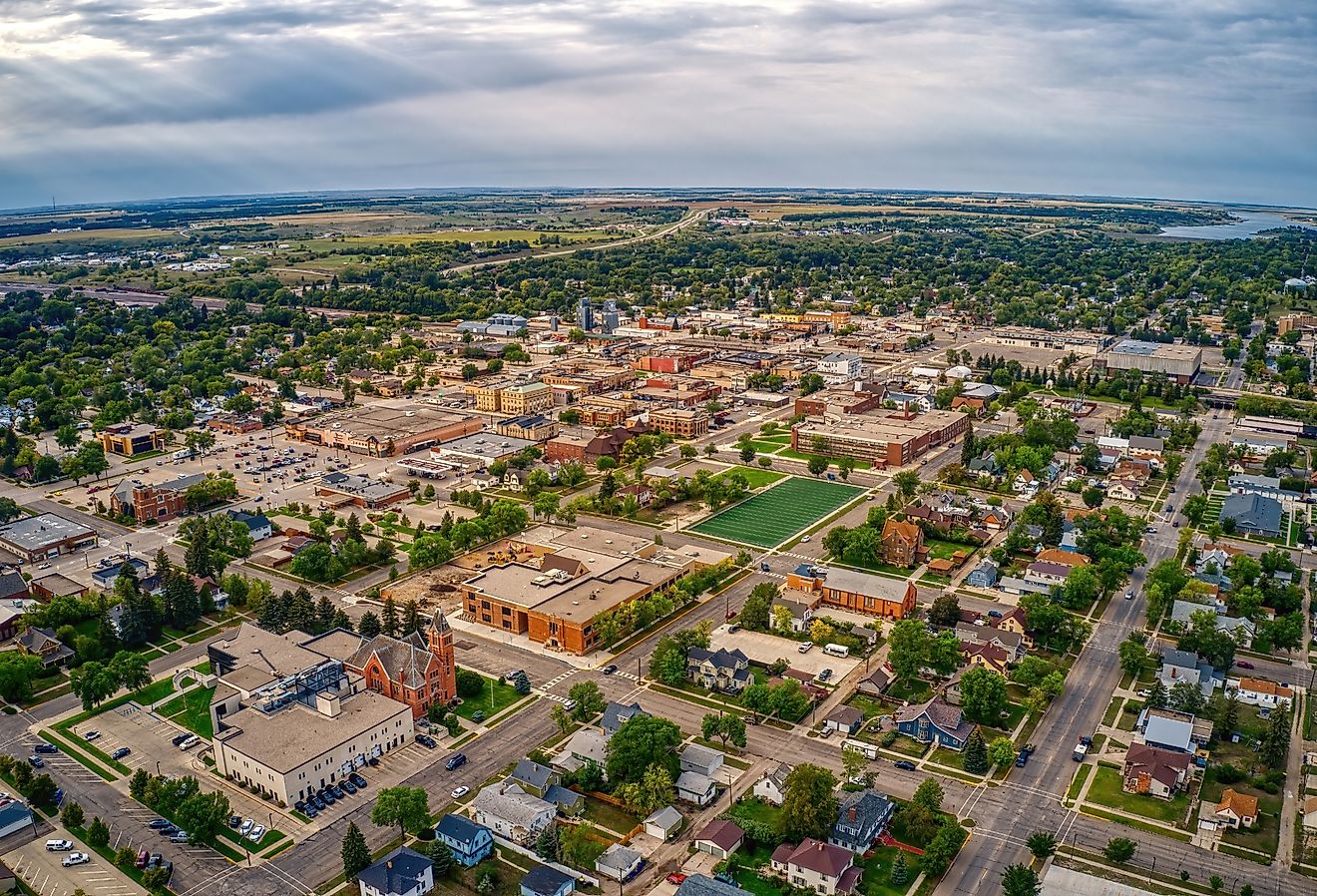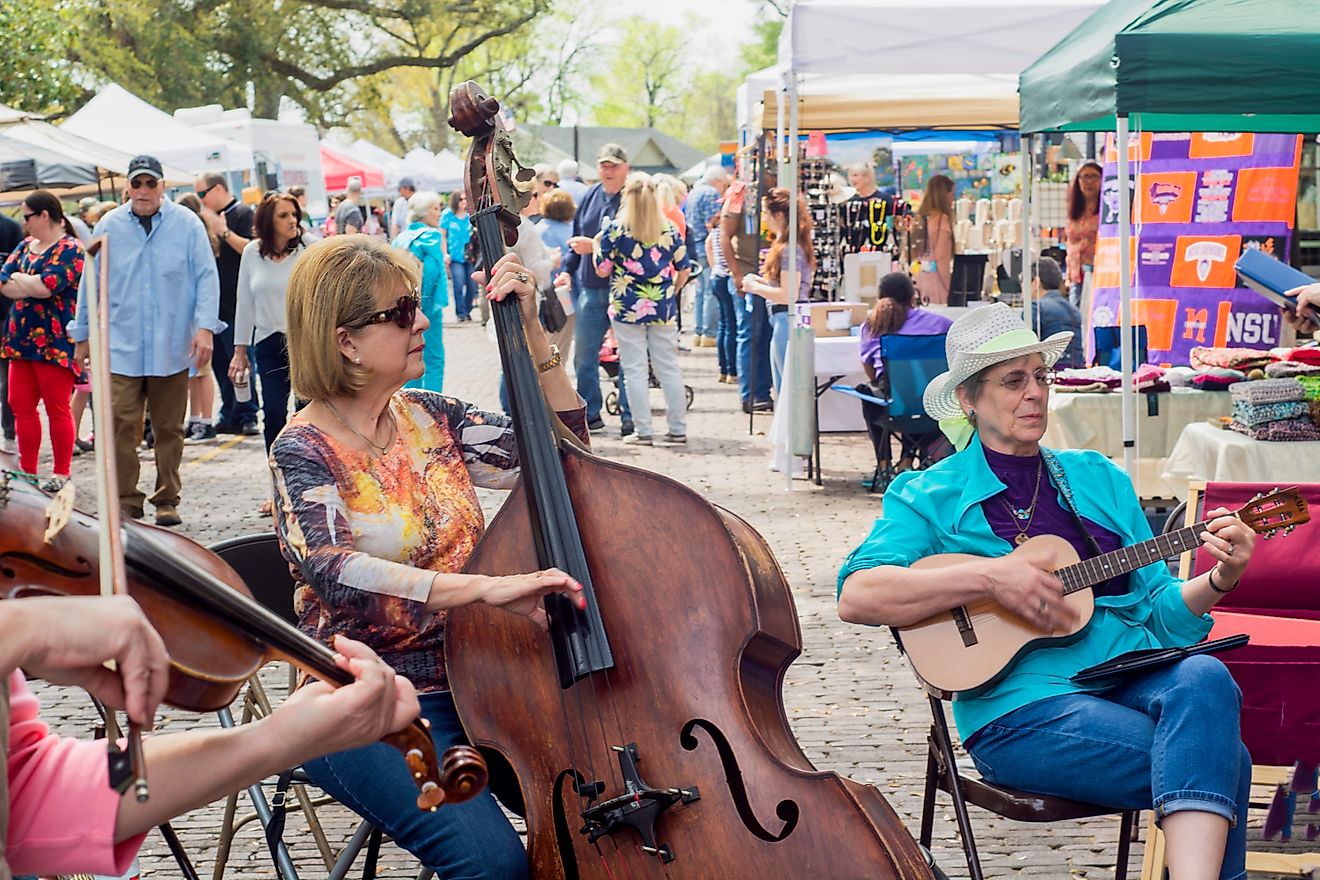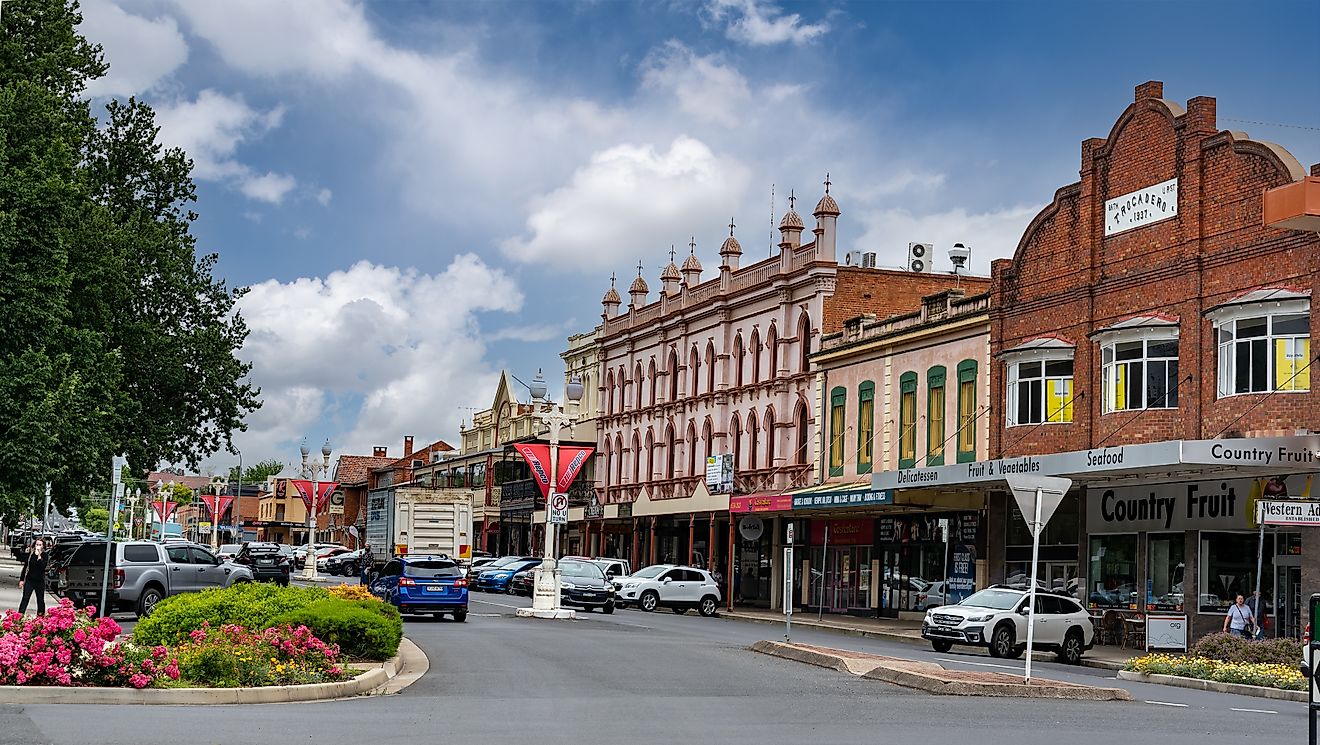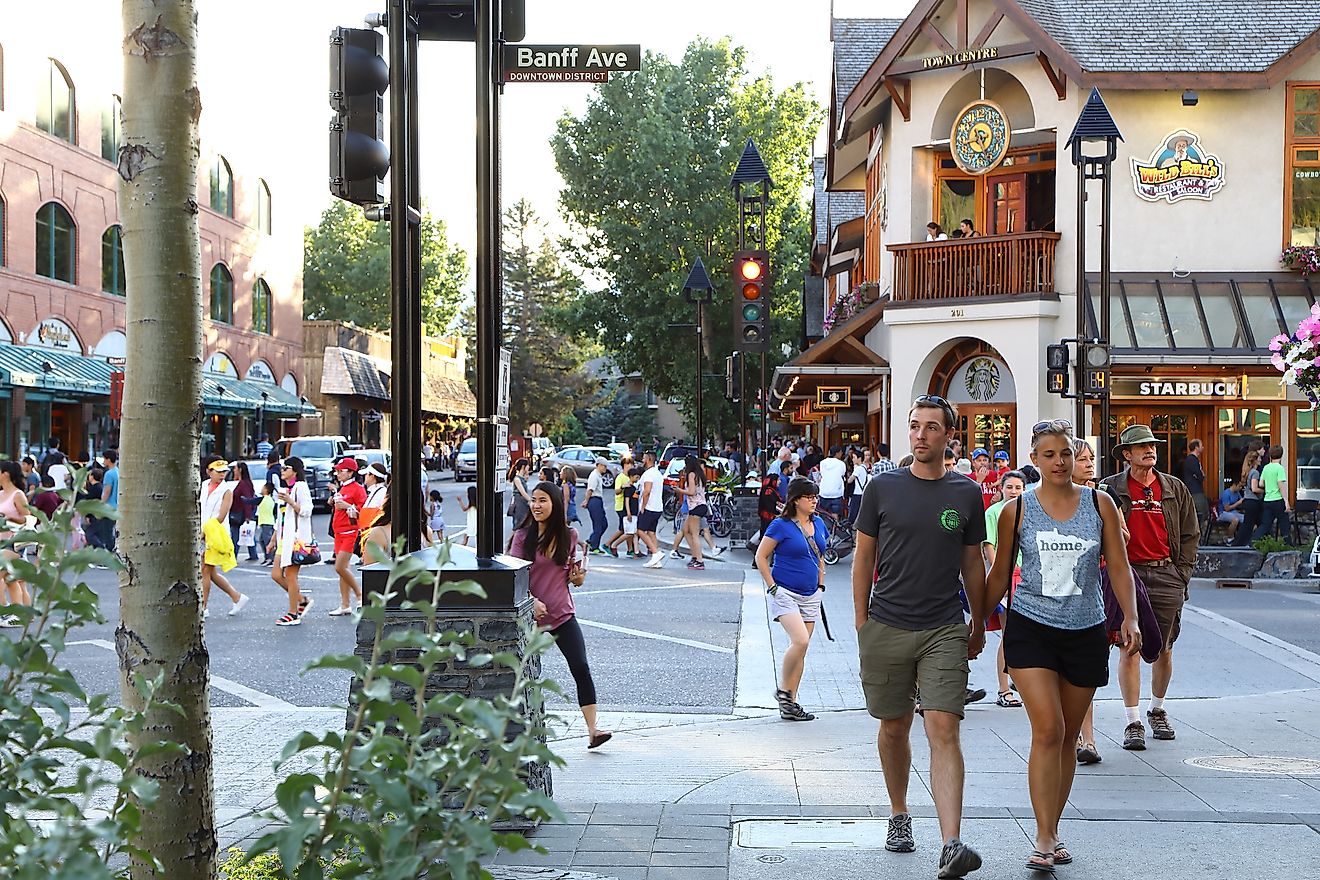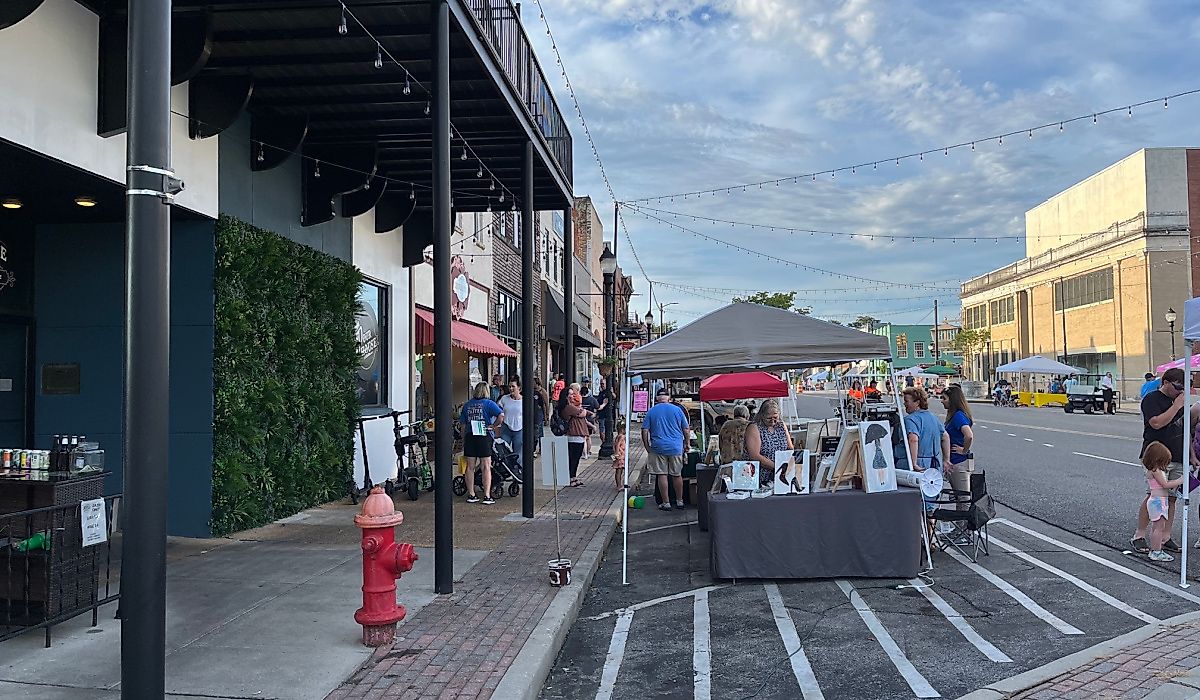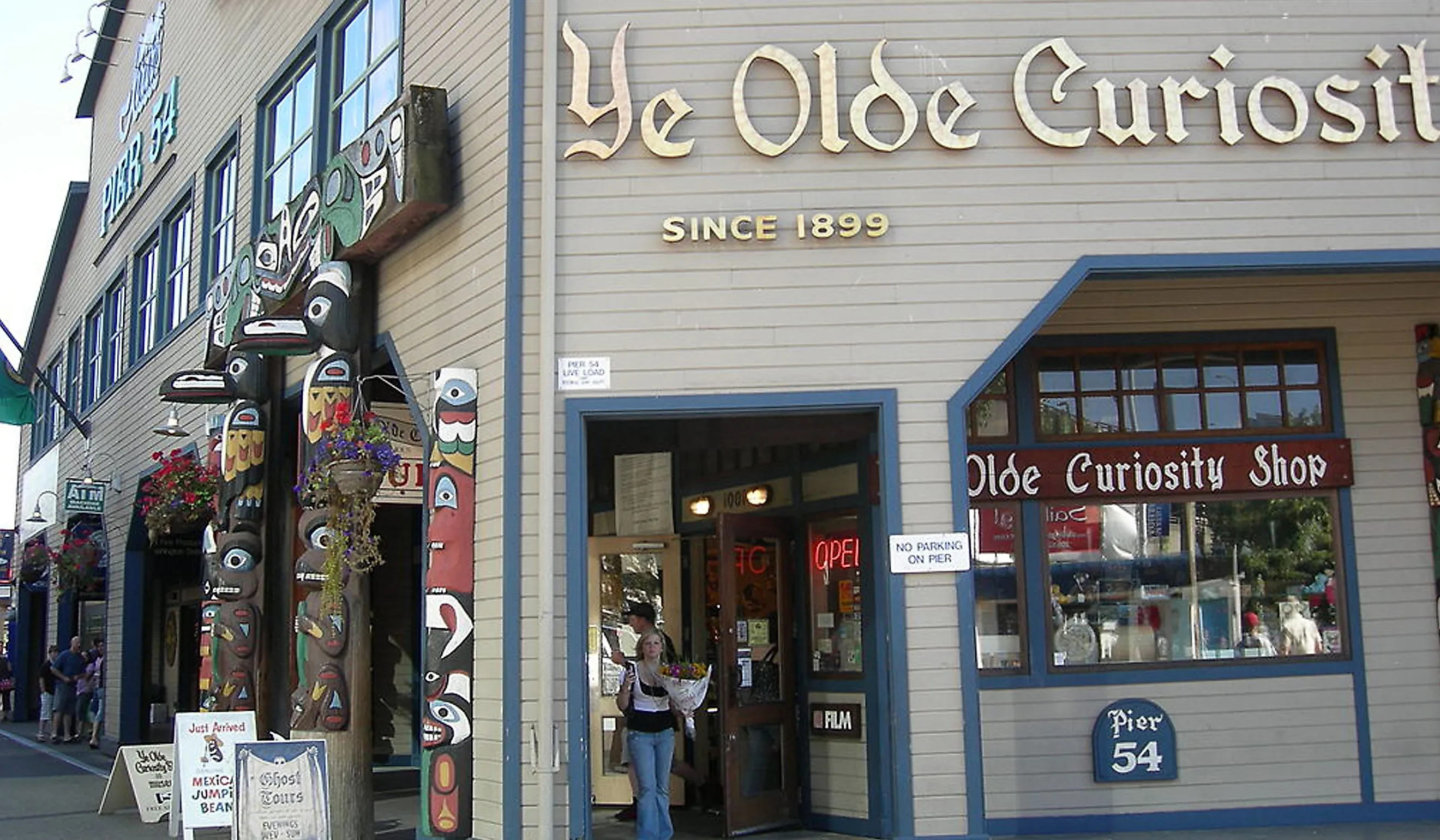
8 Of The Most Bizarre Landmarks In Washington
Washington State has no shortage of natural beauty and iconic monuments, especially if you’re craving the weird, the wonderful, and the downright bizarre. From a suspension bridge built for squirrels to a bike swallowed by a tree, an underground city born of disaster, and a concrete ship turned wildlife refuge, the Evergreen State is bursting with offbeat landmarks that tell some seriously unexpected stories of loss, love, and legend. Here are 8 of the most bizarre landmarks you won’t want to miss.
Seattle Underground, Seattle
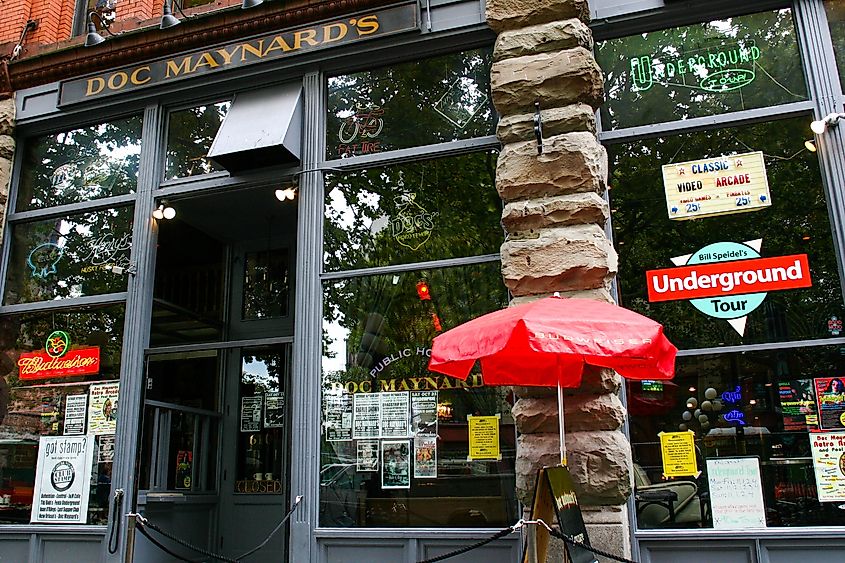
If you like your landmarks underground, then the Seattle Underground is the perfect rabbit hole to fall into. It’s dark, dusty, and dank, but it plays a significant role in the identity and history of “the Emerald City.” On June 6, 1889, a pot of glue boiled over in a woodworking shop in Seattle’s first neighborhood, Pioneer Square, and the resulting fire destroyed over 100 acres of the city’s waterfront and business district in 18 hours. When it came time to rebuild the 25-block area, town planners decided to raise the street level 12 feet higher than the original level to avoid an ongoing flooding problem in the rainy city, leaving many of the original buildings abandoned underground.
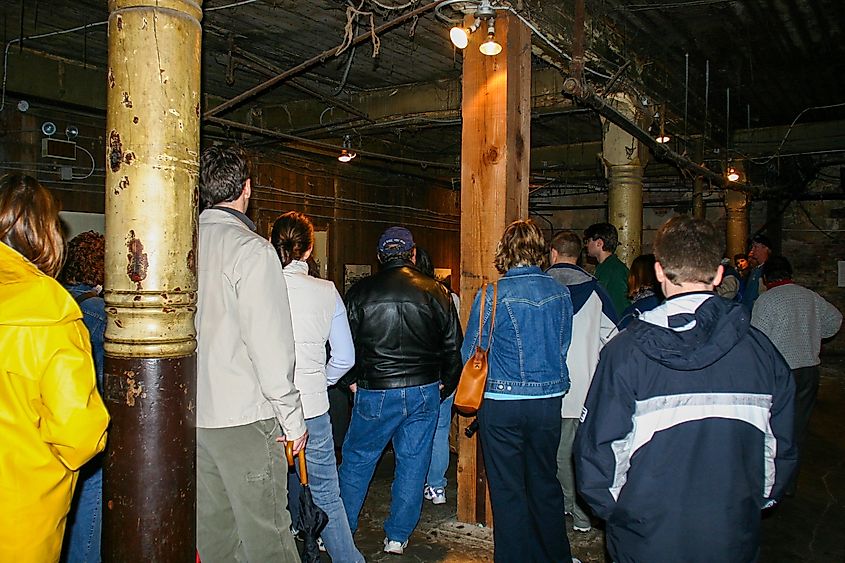
In 1950, Bill Spiedel, a resident, started a campaign to promote the historic charm of Pioneer Square, hoping to attract visitors to the area. By 1965, he was guiding tours through the buried city, which was once a refuge to 2,000 people who were homeless or down on their luck. Today, Seattle’s underground city is accessible only by guided tour. Other tours have popped up over the years, but the original 75-minute quirky guided walking tour created by Spiedel departs from Doc Maynard’s Public House, a restored 1890s saloon in Pioneer Square, and ends in Rogue's Gallery, the Underground Tour gift shop.
La Merced Breakwater, Anacortes
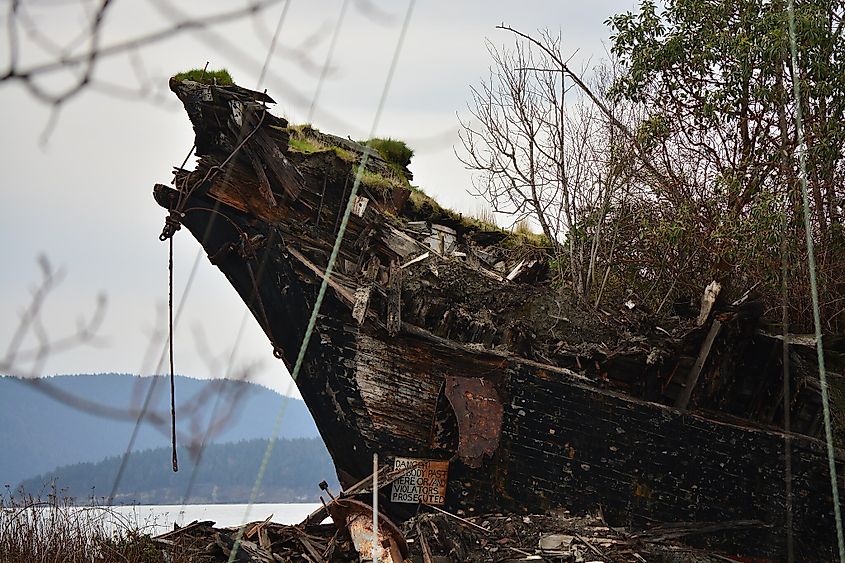
The La Merced was a concrete ship built in 1917 during the shipbuilding boom of World War I to carry petroleum products for Standard Oil. Due to steel shortages during both World Wars, shipbuilders began using concrete as an alternative to steel. Many of these experimental ships were later scuttled and repurposed as breakwaters like the famous Kiptopeke’s Breakwater in Virginia, fishing piers like the SS Palo Alto at Seacliff State Beach in California, or tourist attractions like the SS Atlantus in Cape May, New Jersey.
Although La Merced wasn’t finished being built before the war ended, it served as an oil tanker in New York before it was used as a floating log storage facility for a pulp mill in Anacortes on Fidalgo Island. It was eventually abandoned and grounded by a storm in the 1960s, and later listed on the National Register of Historic Places in 1990. Today, the overgrown ship has become a breakwater + natural sanctuary for plants and wildlife, and is best viewed from the water by kayak or boat.
Looff Carousel, Spokane
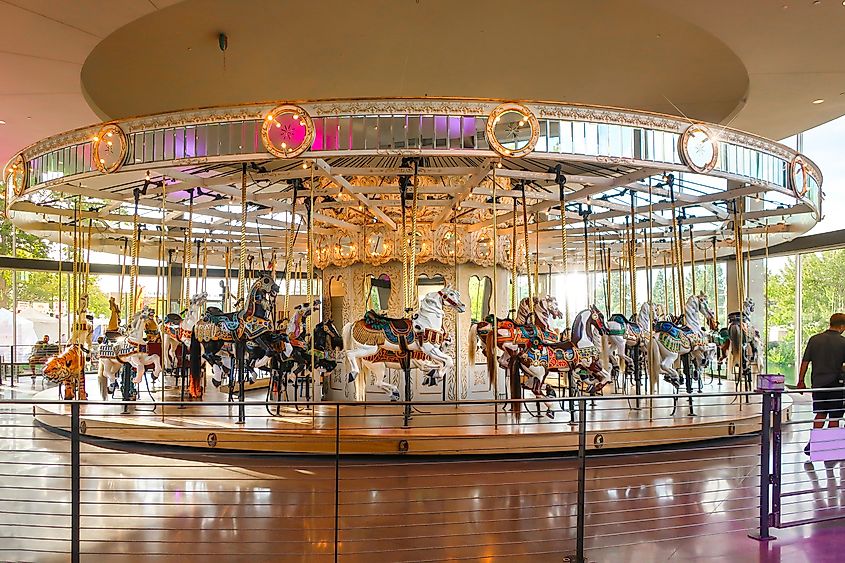
The Looff Carousel is one of Spokane’s most beloved landmarks and a top tourist attraction. Charles Looff created the carousel as a wedding present for his daughter, and the carousel began turning on July 18, 1909, in Natatorium Park (known to locals as “The Nat”). This now-defunct amusement park operated on the banks of the Spokane River until 1967. When the park closed, the carousel went into storage until it was trotted out for a Bavarian beer garden during Expo ‘74, before being refurbished and housed in its current $7 million glass rotunda home. The Looff Carousel has its original hand-carved animals, including 54 horses, two Chinese Dragon chairs, a tiger, a giraffe, and a ring-toss. The carousel still runs regularly in Spokane’s Riverfront Park.
Bike Tree, Vashon Island
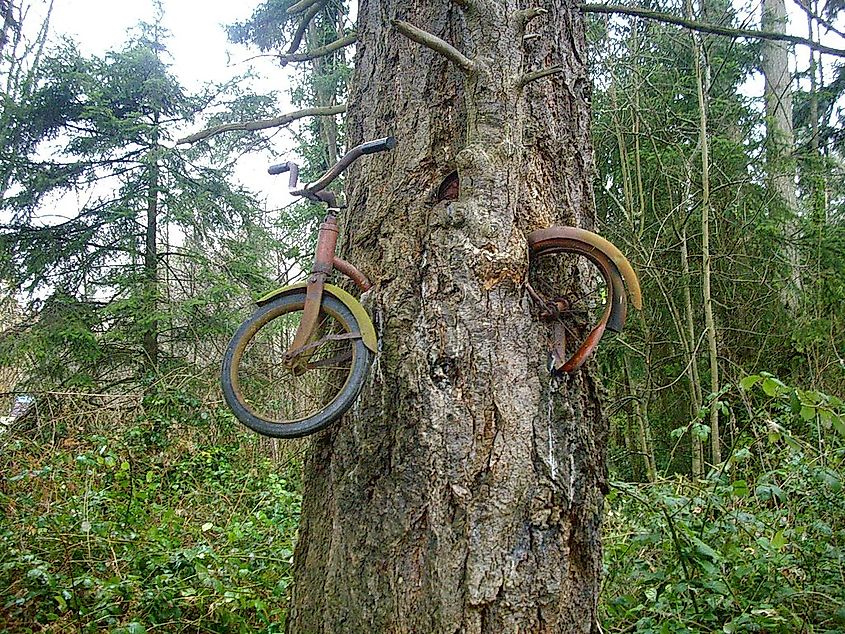
Part urban legend, part popular landmark, part of the fun of the Bike Tree on Washington State’s Vashon Island lies in its mysterious past. Some legends say the bike was left behind by a young soldier in 1914, off to bravely fight in World War I, but that myth was debunked when believers realized that the United States didn’t enter the war until 1917. The real story is that the bike belonged to now-retired King County deputy sheriff Don Puz, who never liked the bike and forgot it in the swampy bog where he liked to collect polliwogs sometime during the 1950s. In 1995, a sister still living on the island took Puz to see the local landmark, and the mystery was solved.
The Vashon Island Bike Tree has been immortalized in Berkley Breathed’s children’s book, “Red Ranger Came Calling.” Today, parts of the bicycle have been removed by souvenir hunters and collectors, and not much of the original bike remains in the tree despite attempts by locals to replace the stolen parts.
Frog Rock, Bainbridge Island
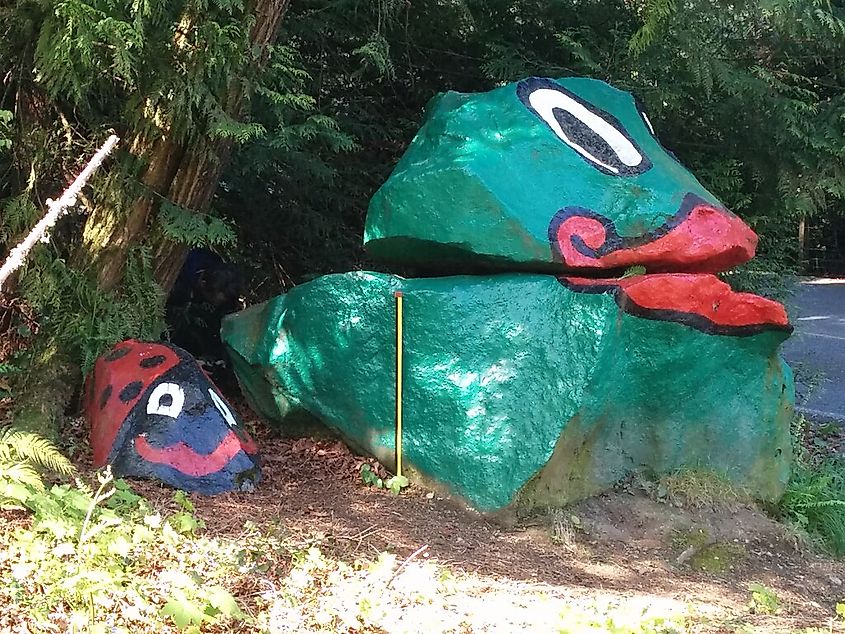
The iconic Frog Rock of Bainbridge Island is more than one of the most bizarre landmarks in Washington; it’s become a symbol of the quirky charm, creative spirit, and love of the small island community, about 35 minutes across Puget Sound from Seattle. The much-loved amphibian made its first appearance on the island on June 7, 1971, when two high school students, Ellen Barnes and Bob Green, reclaimed the rock known as “Split Rock” after a group of rival high school students had defaced it. With a few cans of leftover paint and a lot of creativity, Ellen and Bob transformed the rock into Frog Rock. A year later, the two students returned to Frog Rock and painted a small rock located near the frog to resemble a ladybug as a companion.
In 2025, the city of Bainbridge Island proclaimed the first week of May as Frog Rock Week, and the students, now married and in their early 70s, were on hand to celebrate their contribution to the town of Bainbridge Island, whose nickname is, coincidentally, “The Rock.”
Nutty Narrows Bridge, Longview
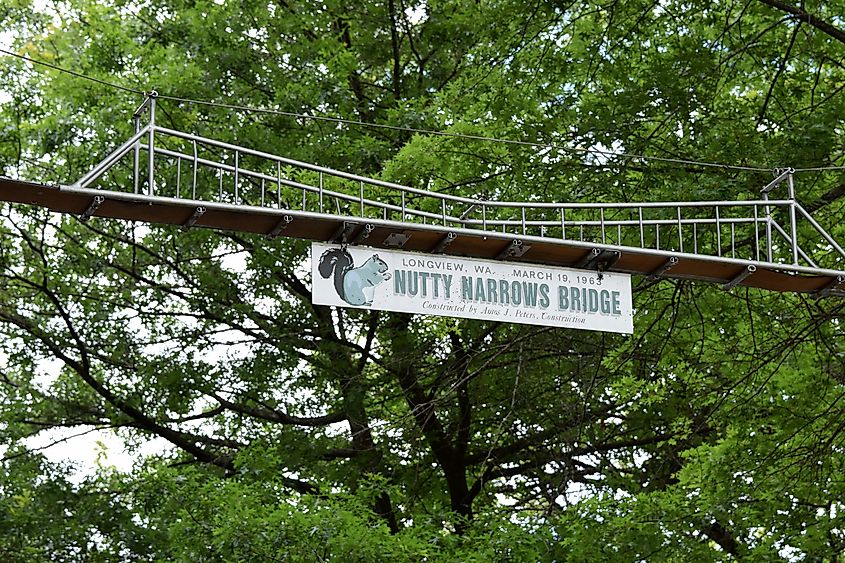
Nature lovers are in for a treat in the squirrely town of Longview, about 50 miles north of Portland, Oregon. Built in 1963 by a local builder, the late Amos Peters, the Nutty Narrows Bridge is a tiny suspension bridge explicitly designed for squirrels who were routinely spotted dodging traffic to and from the nearby Park Plaza office building, where workers were feeding them. Concerned about squirrel safety, Amos formed a committee, solicited help from local architects, and constructed the 60-foot suspension bridge out of aluminium and fire hose for $1,000.

It didn’t take long for the furry animals to start using the bridge over the busy road, and animal lovers from around the world quickly spread the word about the Nutty Narrows. In 1983, the bridge needed replacement, and was rededicated in a ceremony with Disney dignitaries like Chip and Dale and Mickey Mouse in attendance. When Peters died a year later, a 10-foot wooden squirrel sculpture was erected near the bridge in his memory. Today, there are 9 squirrel bridges in Longview, which celebrates its popular residents with an annual Squirrel Fest. This year’s festival takes place on August 16, 2025.
Ye Olde Curiosity Shop, Seattle
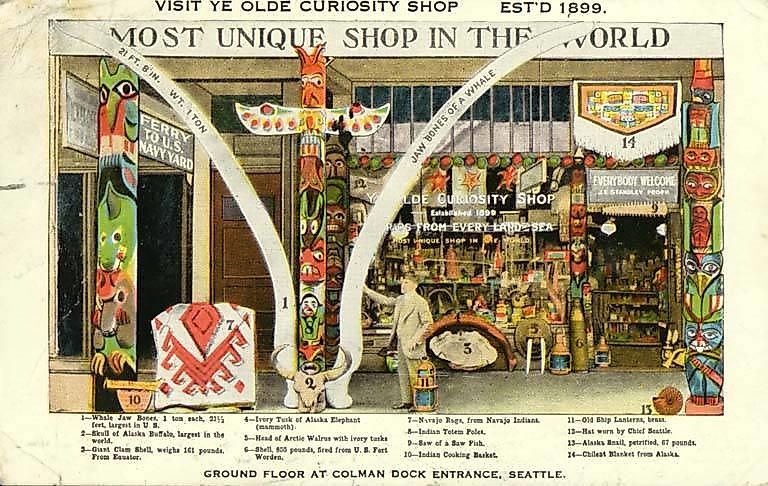
There’s no shortage of wild and wacky in Seattle, and if you’re in the market for quirky souvenirs from a landmark institution that’s been open since 1899, look no further than Ye Olde Curiosity Shop on Seattle’s famous Pier 54. The self-proclaimed “Den of Uniquity” is jammed with typical tourist fare like keychains, hats, and fridge magnets, as well as unusual items like shrunken heads, mummies, and an extensive selection of taxidermic animals and bugs from around the globe.
Founded by J.E. “Daddy” Standley, the businessman initially grew his tiny storefront to one of the most successful businesses on the waterfront by generating an interest in totem poles, then commissioning local Native artists to produce them. Today, Ye Olde Curiosity Shop is still one of the best stores in the Pacific Northwest to find carved totem poles, masks, and other Indigenous artwork for sale. The shop also has an in-house museum showcasing the Standley family’s massive collection of oddities.
B Reactor, Richland
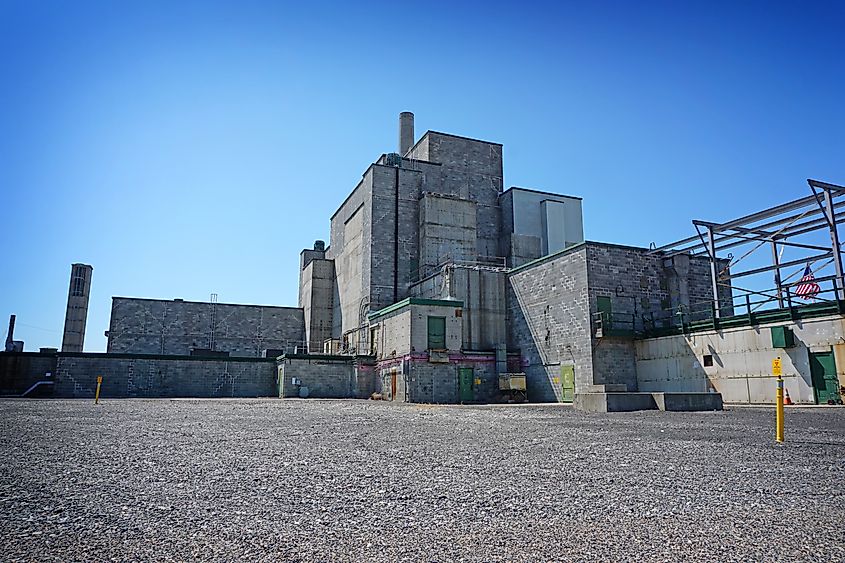
The B Reactor is the world's first full-scale plutonium production reactor, built at the Hanford Site near Richland, Washington, in 1943 as part of the Manhattan Project. It was built under a veil of secrecy during World War II. The plant went operational in 1944 and produced the plutonium used in the “Fat Man” bomb dropped on Nagasaki, Japan. Today, the National Historic Landmark is part of the Manhattan Project National Historical Park, administered by the U.S. Department of Energy and the National Park Service, with sites in Hanford, Washington, Los Alamos, New Mexico, and Oak Ridge, Tennessee. Although tours of the B Reactor are temporarily on hold due to construction during the summer of 2025, other tours in the park remain available and offer a sobering look at the start of the atomic age.
In Washington, landmarks are more than photo ops for your socials; they're the storykeepers of a state. Whether natural wonders or human-made oddities, they reflect the struggles, triumphs, quirks, and turning points that shaped the region. From a woodworking shop disaster and two stacked granite rocks painted by lovestruck students to a stunning carousel built by a father for his daughter on her wedding day, each sad, poignant, or bizarre landmark helps us understand not just where we are, but how we got here.
